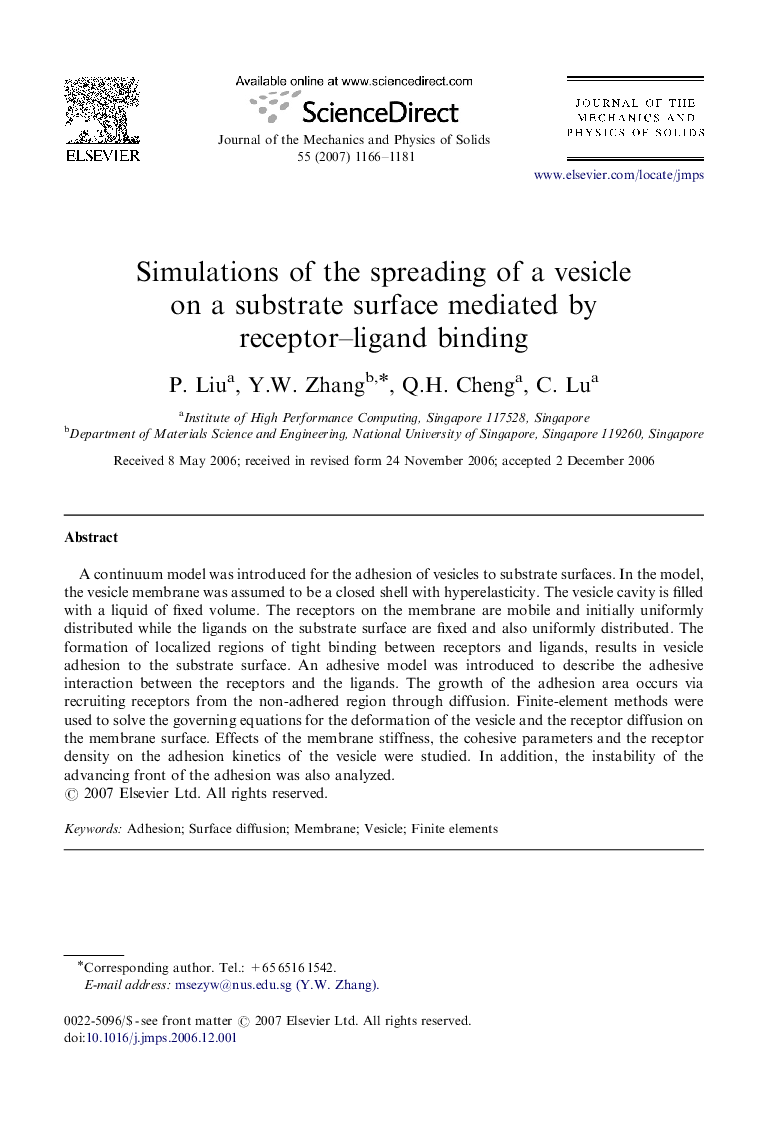| Article ID | Journal | Published Year | Pages | File Type |
|---|---|---|---|---|
| 794081 | Journal of the Mechanics and Physics of Solids | 2007 | 16 Pages |
A continuum model was introduced for the adhesion of vesicles to substrate surfaces. In the model, the vesicle membrane was assumed to be a closed shell with hyperelasticity. The vesicle cavity is filled with a liquid of fixed volume. The receptors on the membrane are mobile and initially uniformly distributed while the ligands on the substrate surface are fixed and also uniformly distributed. The formation of localized regions of tight binding between receptors and ligands, results in vesicle adhesion to the substrate surface. An adhesive model was introduced to describe the adhesive interaction between the receptors and the ligands. The growth of the adhesion area occurs via recruiting receptors from the non-adhered region through diffusion. Finite-element methods were used to solve the governing equations for the deformation of the vesicle and the receptor diffusion on the membrane surface. Effects of the membrane stiffness, the cohesive parameters and the receptor density on the adhesion kinetics of the vesicle were studied. In addition, the instability of the advancing front of the adhesion was also analyzed.
